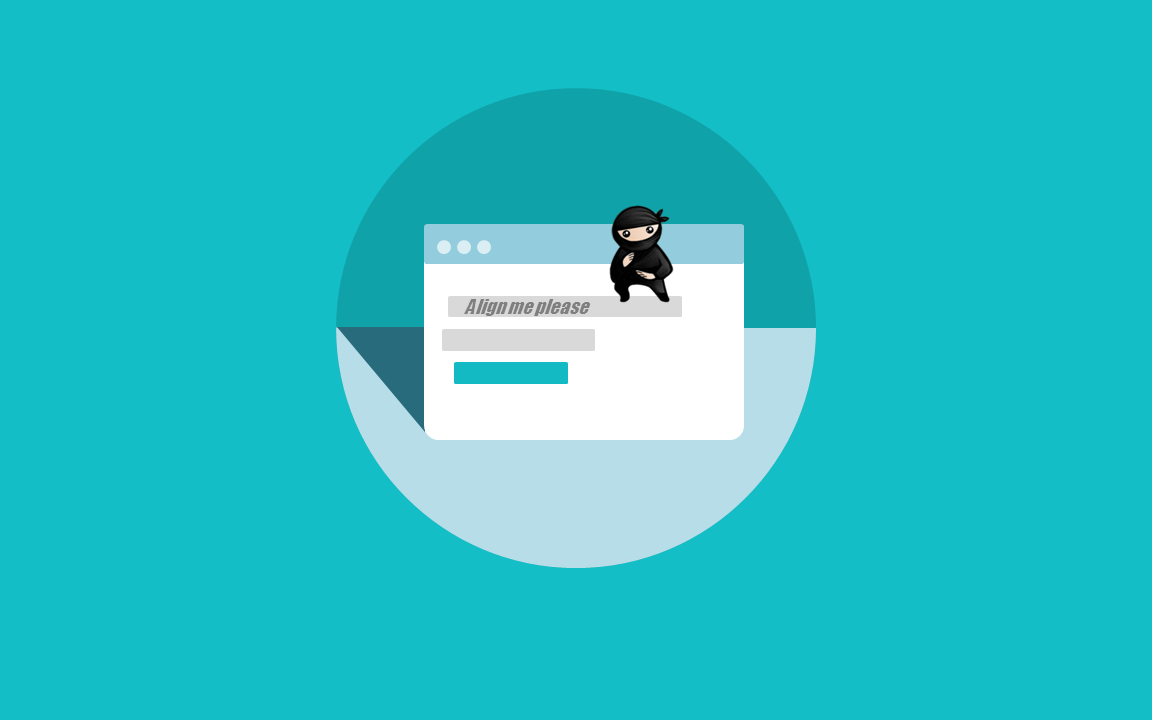 When it comes to presentation skills, I’m sure you’ve heard enough about “tell stories”, “be entertaining” and “arrive early” tips for one lifetime.
When it comes to presentation skills, I’m sure you’ve heard enough about “tell stories”, “be entertaining” and “arrive early” tips for one lifetime.
If you’re looking for practical strategies that you can use on your presentation today, then you’ll love this article.
Inside, you’ll get access to:
– A presentation skills “checklist” infographic
– A complete guide breaking down proven strategies, word-for-word formulas, expert tips and examples to help you dramatically improve your presentation skills
But first, I’d like to start with a very quick, 3-point introduction.
(Hint: when you finish reading it, you’ll know why presentation skills are crucial to your success).
Look:
There are three tiny things you need to know about presentation skills before we jump into strategies and tactics:
1) What are presentation skills?
Presentation skills are your ability one to deliver presentations that educate, engage, or entertain your audience.
2) Why we give presentations
According to the California State University Employee Development Center, we usually of give presentations to:
Inform
Persuade
Educate
For instance:
Inform -> “ABC Engineering: Q4 Sales Results”
Persuade -> “XYZ Marketing: How We Help You x3 Your Conversions”
Educate -> “10 Advanced SEO Techniques From The Pros”
3) Why bad presentation skills have hidden costs
It’s because they’re the difference between getting what you want (educating people, persuading them to do something, closing a deal, etc)….
…or nothing at all.
Let me give you an example:
A prospective client, let’s call him Joe, schedules a meeting with your company because he’s looking for an agency that will handle his yearly event activities.
The current supplier isn’t up to par so Joe wants to find a new company to make events that help him look good and bring more traffic to his store.
Joe has an annual budget of $100,000 dollars (not bad, eh).
You get in the meeting room.
You make your presentation.
“We are a professional team of event experts”.
It’s about you, your history, services, clients you used to work with, and some case studies.
Joe is feeling a bit bored because you’re not actually showing him what you can do to help him design better events. You’re not tying your services to specific benefits he’s looking for (like increasing his customer footfall by 20% within 3 months).
Basically, your pitch is bad.
Wanna know what happens next?
Joe is going to meet with other event agencies that know how to sell themselves and communicate on the value they’re bringing to the table.
He’ll chose the best one.
The one that solves his problems.
The one that is best positioned to help him get what he wants.
And it won’t be you.
He’ll be thinking “if that guy can’t put a solid pitch together, he won’t be able to handle my events in a way that satisfies me”.
You lost 100,000 bucks.
The lesson here?
Good presentation skills are the difference between getting what you want, or nothing at all.
50 Proven Ways to Dramatically Improve Your Presentation Skills

Click here to enlarge
1. Anticipate. Seriously.
[Tweet “If your presentation is important to you, then act like it is.”]
 When I asked Ed from Clear Preso what was his #1 advice for improving presentation skills, here’s what he said:
When I asked Ed from Clear Preso what was his #1 advice for improving presentation skills, here’s what he said:
“Do not leave it till the last minute to craft your message. Do not create the sides the night before the presentation or go out there without having rehearsed. If the presentation matters to you, then put in some serious time and effort, or don’t bother at all”.
Ed Fidgeon-Kavanagh, Chief Presentationist at Clear Preso
2. Be audience-centered (HFD)
 “When people encounter you, they ask themselves four questions that determine your likeability or “L-factor”.
“When people encounter you, they ask themselves four questions that determine your likeability or “L-factor”.
First, they seek friendliness. Then, they ask themselves if you are relevant to them. Next, they ponder whether you have empathy for them. Finally, they ask themselves if you are ‘real’ — that is, authentic and honest”.
Tim Sanders, sales & leadership keynote speaker, author of the Likeability Factor
If you want your audience to like you, learn as much as you can about them, specifically:
Where are they from?
What’s their age range?
What do you have in common?
Have they had any bad news recently?
What do they fear?
What do they want? (AKA what are their key motivators)
Bottom line: Be precise, not random. Find out the Hopes, Fears and Dreams (HFD) of your audience and plan to communicate with that unique group only, no other.
-
How to identify your audience’s hopes, fears and dreams
-
3 proven strategies to identify what your customers want
-
Additional ways to learn more about your audience:
Quora (check out questions + best answers related to your topic)
Amazon (read reviews about products/services/topics related to yours)
Udemy (see what people are saying about courses related to your topic)
Google (instant results and related searches to identify what people are looking for)
3. Define your goal
[Tweet “If you can’t explain in ONE sentence what the goal of your presentation is, you don’t have one.”]
 “If you want results, you need to start by setting goals. When your goals are set, you need to find out how to best achieve them”.
“If you want results, you need to start by setting goals. When your goals are set, you need to find out how to best achieve them”.
Michael Aagaard, via Content Verve
Crucial, especially when trying to build effective presentations that convey a powerful message.
Here’s an example:
If you’re trying to build a relationship with a prospective client (to be able to sell your products), your goal isn’t to make a creative presentation. Your goal is to show your client you + your products are perfectly positioned to solve their problems.
Answer this question:
Why are you making this presentation? (AKA why do you wanna talk to them?).
For instance:
Get an order of $10,000 today
Build a relationship with them (so two years from now they wanna purchase from you)
Bottom line: Have ONE goal. Set your SMART goals before you write a single word.
4. Identify your audience’s motivation level
The way we’re going to think about your audience today is rooted in this guy named B.J. Fogg who famously came up with the behavior model:

Let me simplify that for you:
For a person to perform a target behavior (AKA help you reach your goal) he must be sufficiently motivated and have the ability to perform the behavior.
Which is why you really need to understand what stage of the buying cycle your audience members are in.
Answer these questions:
Has your audience heard of your company/product before?
Are they intending to make a purchase?
Do they have all of the information they need to make an informed decision?
What fears / anxieties could be holding them back?
Bottom line: Knowing the context helps you to determine your choice of words and level of information, but also to structure your delivery and motivate your audience.
5. Build your core message
[Tweet “You can have the best product but if you can’t communicate well about it, you have nothing. “]
Your core message is the #1 thing you wanna your audience to remember.
The most critical one.
The one they CAN’T miss.
If they remember ONE thing, they’ll remember you.
Use this formula to build your core message:
Action verb + who + what
For instance:
Show these Shanghai-based consultants how my company can help them get more leads.
Motivate my directory board to increase the marketing budget.
Convince the prospect to sign that contract today.
Bottom line: You core message must be articulated around a) helping you reach your goal and b) giving your audience what they want.
6. Craft your elevator speech
[Tweet “Your elevator speech answers this question: why should I listen to you? “]
Effective elevator speeches include:
Benefits
The word YOU
Are geared toward solving your audience’s problems

Use these elevator pitch builder formulas:
Today, I am going to teach you about [ RESULT THEY CARE ABOUT ]
Today, you will get / discover [ OUTCOME ]
If you agree to meet with us, you will [ RESULT THEY CARE ABOUT ]
If you read that presentation, you will [ RESULT THEY CARE ABOUT ]
For instance:
Today, you will discover the 5 strategies we’re using to triple our conversions.
Today, I am going to teach you the 3-step process I used to double my website traffic in 2 months.
If you agree to meet with us, you will learn how to launch events that increase footfall and instantly separate you from the competition.
Bottom line: your elevator speech must be angled toward helping your audience do do/get/discover something that benefits to them.
7. Break down your core message in small bits
Answer these questions:
What are the top 5 big reasons that will motivate my audience members to do what I want?
What messages will drive them toward my goal?
If you don’t know, ask your actual customers why they’ve decided to work with you (AKA what they like about you).
8. Backup everything with data (supportive points)
[Tweet ““In God we trust, all others must bring data.””]
If you want people to trust you, make sure to provide research, data-rich points that prove what you’re saying (AKA case studies, statistics, testimonials, money-back guarantees…)

Don’t say: We’ve helped companies increase their sales.
Say: We’ve has helped Bryan from ABC marketing to increase their sales by 34% in two months.
Rule of thumb: Opinions are bullshit. Do research. No opinions unchecked.
9. Treat your presentation as if it were a movie
[Tweet “Treat your presentation as a movie: set up a conflict that needs to be resolved.”]
When asked what she thinks a great presentation advice is, graphic designer Elly Whiley had this to say…
 “Treat your presentation as if it were a movie.
“Treat your presentation as if it were a movie.
Have a solid introduction that will intrigue your audience, a climatic middle where you raise problems and/or questions and finally a powerful conclusion where you answer and resolve everything raised and leave the audience with something to think about.”
Elly Whiley (via Canva)
The most effective presenters use the same techniques as great storytellers again and again. They remind people of the status quo (i.e. your audience’s pain points)… and then reveal the path to a better way.
Let’s illustrate this with one of my favorite example:
10. Use PRD and PCR frames to tell stories
[Tweet “”A story is a series of actions that overcome obstacles in order to achieve a goal””]
Let’s take a quick look at how the Harvard Business Review editor Bronwyn Fryer describes what a story is:
 “Essentially, a story expresses how and why life changes.
“Essentially, a story expresses how and why life changes.
It begins with a situation in which life is relatively in balance: You come to work day after day, week after week, and everything’s fine. You expect it will go on that way.
But then there’s an event—in screenwriting, we call it the “inciting incident”—that throws life out of balance. You get a new job, or the boss dies of a heart attack, or a big customer threatens to leave.
The story goes on to describe how, in an effort to restore balance, the protagonist’s subjective expectations crash into an uncooperative objective reality”.
Story: Balance + something happens (that throws life out of balance) + how to restore balance
The PRD frame
Problem: the current situation for your audience. Do you suffer from/Sick of being…
Relief: it can change. It doesn’t have to be that way/there’s a solution…
Dream: your solution. Imagine if you could…how your life would be if you could…
The PCR frame
Protagonist: climate change / small farmers providing food to restaurants
Conflict: how climate change affects the growing season”
Resolution: policies that are or should be in place or discussion about how people in other regions are mitigating the effects of climate change on local resources. Source.
11. Each slide has one message, idea, goal
One slide = one idea, one message, one core point
When asked what was his # 1 advice to build effective presentations skills, Haiku deck co-founder Adam Tratt had this to say:
“The first is focus on one idea at a time. We do this by limiting the number of words you can put on a slide.
Less is more. Remember, your audience can either listen to you, or ready your slide. Avoid loading up your presentations with too many words”.
Adam Tratt. Co-founder at Haiku Deck.
To help you be laser-focused on your message, use this formula every time you’re building a slide:
The purpose of this slide is to [ FILL THE BLANK ]
For example:
The purpose of this slide is to [ show that our sales grew by 16% this year ]
The purpose of this slide is to [ demonstrate that our app features are the best in the market ]
Here are 4 ways to craft attention-grabbing headlines that’ll motivate your audience to keep reading.
[Tweet “5 times as many people read advertising headlines than copy.”]
If advertisers haven’t done some selling in their headlines, they’ve wasted 80% of their clients’ money.
David Ogilvy.

Headlines have two purposes: grab your audience’s attention + motivate them keep them reading.
Powerful headlines have four qualities:
1) Self-interest (focused on your audience)
2) News (teach them something)
3) Curiosity (get them want to know more)
4) Ultra-specific (AKA use figures)
12. Craft powerful headlines using the “Brain Dump” method
You’re gonna make a couple of subject lines and start filling them in. For instance, your slide is about the weight-loss problem.
Let’s start writing:
Subject 1: How to write lose weight (sucky)
Subject 2: How to write lose weight effectively (meh)
Subject 3: 5 best-ever weight-loss secrets from thin people (good)
Subject 4: 3 things experts won’t tell you about weight-loss (catchy!)
Bottom line: practice, practice, practice. Write as many subject lines as needed. Review them later, pick the best one (ask friends or colleagues if you’re unsure).
13. Steal your headlines from Amazon
For example, let’s say I want to figure out some good headlines for copywriting services I have.
The first step is to slap the term “copywriting” into Amazon and see what comes up:

Browse through the best ranked book titles.
BOOK TITLE: “Copywriting: a beginner’s blueprint. How to write amazing copy that compels readers to take action without selling your soul.”
Headlines we can make out of this book title:
-
Learn how to write amazing copy that compels readers to take action, right now.
-
You don’t have to sell your soul to write amazing copy that sells
14.Use these 7 attention-grabbing headline starters
New
Now
Here’s
Announcing
Presenting
Introducing
Look !
Source: CA$HVERTISING
For example:
Our powerful new seminar teaches marketers the power of persuasion to drive people into a buying frenzy
Now you can stop worrying about your traffic
Announcing the hottest new lobster roll from Cali
Presenting the easiest way to engage your customers
Here’s why our digital marketing services are a great fit for you
Look! It’s that easy
15. Use “lenses” to write headlines
Copywriter Neville Medhora came up with the concept of lenses to write headlines that appeal to a specific audience. Lenses work especially well for sales presentations. There are three types of “lenses” you can instantly apply to your headlines:
-
“Competitive” lens: “Dominate the search results, and leave Page 2 of Google for your competitors”.
-
“Benefit Driven” lens: “80% faster than any other internet provider”.
-
“Inspirational” lens: “What if you could learn the exact system to rank a website that generates traffic, sales & Customers 24/7?”
Check out Neville’s video to dig deeper into the lenses concept:
Resources for your headlines:
Portent (headline generator)
Title Generator (headline generator)
Internet Marketing Course (headline generator)
Over 139 formulas, from +30 different online author (AKA Joanna Wiebe’s supreme guide to writing amazing headlines fast)
16. Avoid the me-too syndrome (here’s how)
[Tweet “Nobody cares about you, people care about what you can do for them.”]
The problem with 80% of business presentations and sales pitches?

Let’s take a look at this really bad example:

Can you spot what’s wrong with this spam email?
Well, I’ll tell you:
The me-too syndrome AKA the number of time it’s about THEM vs. the number of time it’s about ME.
Here’s the breakdown:
-
THEM (AKA “I”; “us”, “our”): 15
-
ME (AKA “you”): 11
-
Me-too score: 58% (15/26)
To avoid the me-too syndrome, make sure me-too score is under 50%, but more importantly… don’t talk about you, talk about what you can do for THEM.
How will you improve their business?
How will you educate them on a specific topic they’re interested in?
How will your skills/services/products will make their life better?
Don’t be like that dumb Chris who says:
If you’re interested in hearing what we can do for you…
Instead, say this:
We have closely analyzed your website and based on this, we believe there are two challenges you’re looking at:the first is X, the second is Y. We’ve done a lot of work on X and Y. In fact, we’ve already helped ABC firm to grow their traffic by 200% the last 6 months. We’d love to help you do the same.
17. Be ultra-specific
If I asked you right now, “What makes your company different?”, what would you say? 90% of us would something like this: “we provide premium services” or “we’re a great team of professional people”. Yeah, I like to breathe oxygen too.
Be specific.
Don’t say:
How to improve your finance quickly and claim back your freedom.
Say:

18. Apply the SVO principle
Sentences that have a subject-verb-object order are more readable than those that don’t. Source.
Don’t say:
The technique was recommended by the American Concrete Institute.
Say:
The American Concrete Institute recommends the technique.
19. Write to a friend
[Tweet “Write for the ear, not the eye. Old adage.”]
Look:
There’s nothing worse than getting junk content from another me-too company that rambles on and on about how amazing they are.
But on the other hand, when you read something that’s written to you – like a personal note – you’ll devour every word. Because you’ll want to know what’s in it for YOU.
Bottom line: act as your audience members are your best friends (think, how would I write to NAME OF FRIEND?).
20. Use questions
Rhetorical — Interesting, Aren’t They?
21. Hit specific emotions
You know which emotions you want them to feel at every paragraph (anger, curiosity, relief, happiness?).
22. Do not overwhelm them, keep it simple.
[Tweet “79% of people scan read, rather than read every single word.”]
Source
No, your audience doesn’t need to know everything. Prioritize and focus truly brings value to them AKA here’s what we really do that’s gonna make a meaningful impact on your life / business / sexuality / happiness.
Bottom line: every word must earn its place on the slide, seriously.
23. Do the chimpanzee brain test
Read out loud every single sentence in your deck and ask yourself:
Is it easy to understand or not?
If the answer is no, shorten the phrase or break it down in smaller pieces.
Bottom line: You don’t need complex words or perfect grammar. Don’t make them think and express only one though in a sentence. Use your next sentence to say the next thing.
24. Apply the 6×7 rule
 “Remember, your audience can either listen to you, or read your slides.
“Remember, your audience can either listen to you, or read your slides.
Avoid loading up your presentations with too many words”.
Adam Tratt. Co-founder at Haiku Deck.
Your audience should be listening to you, and not reading slides. Plus, you should be looking at them while speaking (not reading slides).
No more than 6 lines per slide
No more than 7 words per line
Source
25. Customize your deck size
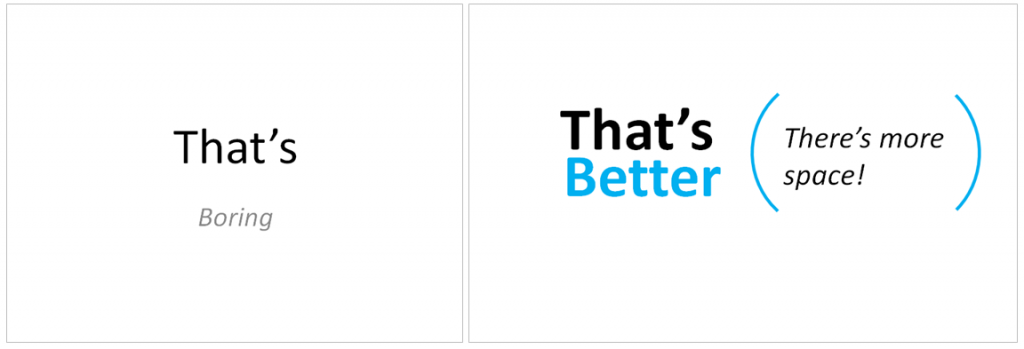
Learn how (and why) to do that here.
26. Prepare your opening slides
Here’s the deal, your opening slides have two targets:
-
Assure your audience they’re in the right place (AKA your core topic)
-
Remind them what they’re going to hear (which is gonna hook them because they want to get the answer)
For instance:

Left side cover shows you the result you’ll get by reading the deck: learn 100 marketing growth hacks
Right side cover shows you the result you’ll get by reading the deck: learn facts about the spine you probably didn’t know
27. Each content slide has 3-4 elements
Image source
-
Headline to grab the attention
-
Sub-headlines give you more information and further
-
Illustration: to get your attention and to illustrate the point more fullyspee
-
Copy: to convey the main selling message of the slide
28. Use visuals
 Many folks out there urge you to use visuals, few tell you why you should.
Many folks out there urge you to use visuals, few tell you why you should.
So here’s why:
We process visuals 60,000 times faster than text.
40% of learners respond better to visual information than text alone.
People who use visual aids are 43% more persuasive than those who don’t.
Here’s my go-to-list of breathtaking, free-to-use photography resources:
Gratisography (crisp, fun, humorous visuals)
Death to the stock photo (as the first one)
Startup stock photos (genuine looking pics)
Pexels (lots of themes, beautiful photo)
Unsplash (stunning nature related visuals)
Little visuals (as Unsplash)
Pic jumbo (urban-related pictures)
Learn how to design attention-grabbing cover slide here.
29. Build a powerful color theme
[Tweet “Color accounts for 85% of the reason why someone decides to purchase a product.”]
So, what’s the bottom line?
Color sell products. Make sure the colors you chose are:
-
Strongly associated with your organization (color increases brand recognition by up to 80%)
-
Aligned with your audience’s characteristics. Find out how to align your colors with your consumer’s backgrounds here, page 6 and 7.
-
Complementary: colors opposite each other on the color wheel.

Create your winning color themes:
ColorCode
Colour Lovers
Adobe Kuler ♥
The basics of color theory (fun, interactive article)
30. Use icons
This post shows you how to integrate icons in your presentation slides. Here are great icon resources:
31. Steal like an artist
You don’t have to start building a presentation from scratch.
Instead, do what I’m doing:
Create a folder on your desktop and title it “Swipe File.” Anytime you see a beautiful design or great copy, just add it to your swipe file. Set up individual folders or labels (E.g. “Great Cover Slides”, “Headlines”, etc). Pretty soon, you’ll have a repository of inspiration that you can tap into when you are working on your own presentations.
Here’s how my personal swipe file looks like:

Amazing sources of design inspiration:
32. Choose the right typography
People are more likely to engage in a given behavior the less effort it requires (Source)
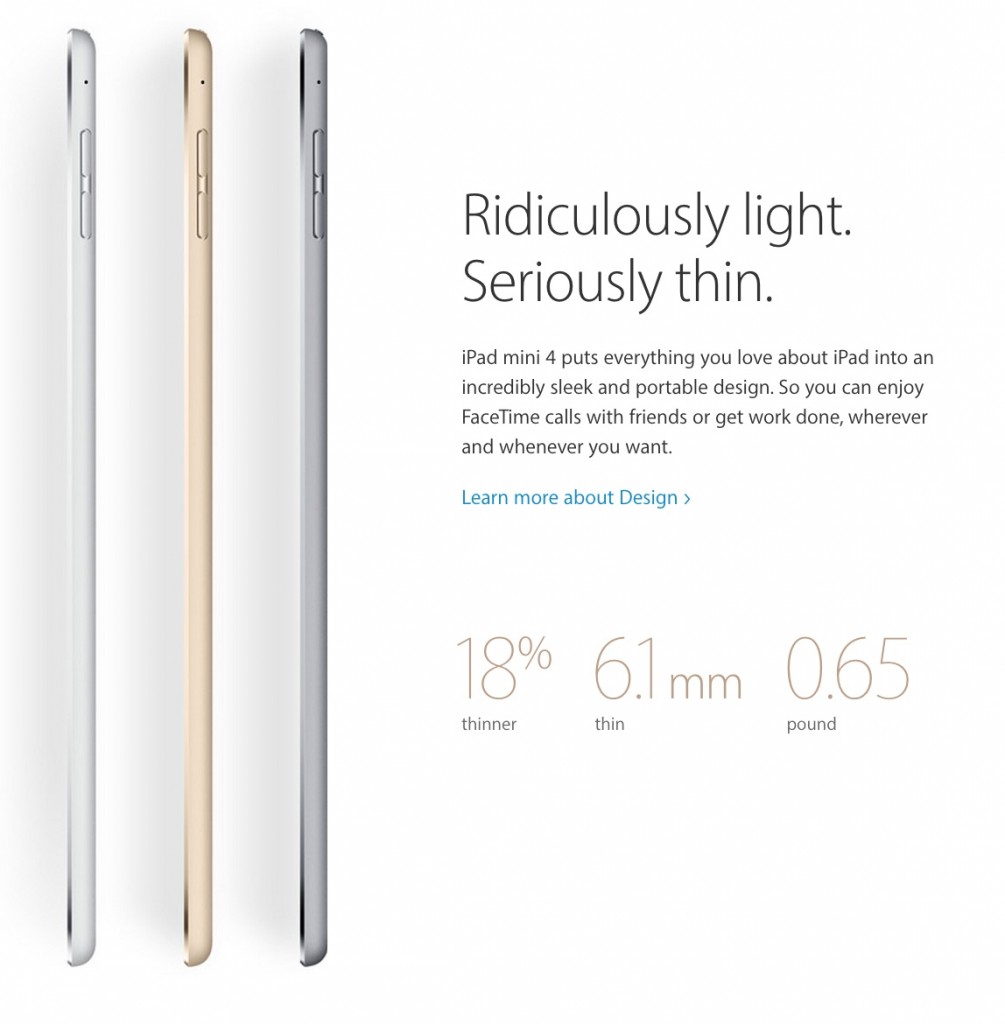
Helvetica is Apple’s office font. Amazing, isn’t it?
For free and creative font options, check out:
33. Use the CRAP principle
There are not a hundred but one principle of design that I want you to get under your belt.
The CRAP principle: Contrast, Repetition, Alignment, Proximity.
Contrast is all about making things stand out. It can be achieved using three major tactics: manipulation of space (near / far, empty / filled), color choices (dark vs. light / cool vs. warm) and text (typography style / bold vs. narrow).
Repetition, for instance making a headline and a sub-message the same color, makes scanning your deck much easier. Repetition helps you create a cohesive look to your presentation.

Alignment. Newspapers use this to great effect. Aligning a whole bunch of elements with one another makes them scan faster. Alignment makes things easier to read.

Proximity means that things are associated with one another. Let me explain that for you: the closer things are, the more they are associated The farther they are away from one another, the less they are associated.

Image source
34. Make closing slides
Repeat your agenda AKA your deck’s plan to remind the audience of what they just got.
In the final slide confirms that the presentation is over.
For instance:
Thank you!
Contact information
“According to most studies, people’s number one fear is public speaking. Number two is death. Death is number two. Does that sound right?” Jerry Seinfeld
[Tweet “You only have 7 seconds to make a great first impression”]
It takes only seven seconds for us to judge another person when we first meet them, says Linda Blair, clinical psychologist. Which leads us to the following question:
What is the best way to start a presentation and make a killer opener?
Well, to succeed, three things must happen:
1) Get them to pay attention to you
2) Answer the why should I listen to you question
3) Give them a hint about the direction of your speech
Here are 4 ways to craft a killer opener that’ll grab your audience’s attention (and improve your presentation and public speaking skills)
35. Begin with a story
[Tweet “Your audience recalls only 10 to 30% of what they hear.”]
Source
“Two years ago, my life changed forever. My wife Kalcy and I welcomed our daughter Leila to the world.”
The first 20 hours — how to learn anything | Josh Kaufman | TEDxCSU
36. Make a provocative statement
For instance:
 “Hey are you excited to be here? Are you ready to learn some stuff? Are you ready to get humped up and get excited, motivated?
“Hey are you excited to be here? Are you ready to learn some stuff? Are you ready to get humped up and get excited, motivated?
If that’s you…you came to the wrong place because we’re not doing any of that today.
We’re gonna learn actual stuff, usable, in the real word.
And you’re gonna come away from here with things you can use, make money with”.
Oren Klaff
You might want another example, am I right?
Check out Will Stephen’s amazingly provocative TEDx intro:
x
How to sound smart in your TEDx Talk | Will Stephen | TEDxNewYork
“Hear that? That’s nothing!
Which is what I, as a speaker at today’s conference, have for you all:
I have nothing
Nada
Zip
Nothing smart
Nothing inspirational
I have absolutely nothing to say whatsoever.”
Like this presentation opener tip?
Click here to tweet it !
–

37. Use statistics/quotes in your opener
One of the best ways to start a speech?
Numbers and quotes !
For instance:
“46% of US small businesses feel they are being “sold to” instead of “spoken to” by other businesses “.
“You only have 7 seconds to make a great first impression”.
“Before we get started I wanna tell you about a quote from a guy named Adam Nash: Growth is important and all good companies take it seriously”. Growth Hacking – Neil Patel – Pioneers Festival 2014
To find reliable statistics or quotes, head over to Google and try these search strings:
-
site:edu + “your keyword” + “data”
-
site:edu + “your keyword” + “percent”
-
inurl:research + “your keyword” + “statistics”
-
“your keyword” + quote
38. Make a huge promise (GTS formula)
Get your audience’s excited about what they’ll be able to do or know by the end of your speech.
Use the GTS (give them something) formula:
You will get
You will learn
Today, I’m going to show you [ statement that benefits your audience ].
By the end of this presentation, you will [ result they’re interested in ].
For instance:
By the end of today’s presentation, you will join an elite group of speakers who can changes lives of their audience members for the better. You will learn secret techniques that only a few of the world’s best speakers are using and that’ll make every speech an outstanding one.
People will listen because they really want to get what you promise.
Bottom line: don’t over-promise, ever.
39. Share a plan
If your speech is longer than 30 minutes, give em a plan. A plan makes it easy for your audience to follow through AKA see where you are at any point in time.
For instance:
“5 steps for financial freedom and you’re taking about 3: they know you’re at the middle of the speech”.
40. Stand facing the people you’re taking too

41. Use high-power poses
According to Harvard Business School professor Amy J.C. Cuddy, high-power poses decrease cortisol (“the stress hormone”) by about 25% and increase testosterone by about 19% for both men and women.

Nonverbal expressions of power and dominance are about expanding:
Stretch out
Open up
Make yourself taller
Seriously, set aside 15 minutes to watch this amazing TEDx talk:
Bottom line: Don’t use defensive postures such as arms crossed, hands in pockets, hands clasped behind or in front of your body. These postures limit your gestural ability and will make your audience close off as well.
42. Use eye contact
Eye contact is crucial in keeping you and your audience connected. Here are two things you should do to keep them engaged:
-
Spend a few seconds with each person you look at
-
For bigger lecture halls, use an M or a W pattern to spread eye contact throughout (source).
43. Keep moving
 “Human beings are drawn to movement. If you move when you speak, you’ll get people’s attention.
“Human beings are drawn to movement. If you move when you speak, you’ll get people’s attention.
It can be especially effective to move toward the audience before making a key point, and away when you want to signal a break or a change of subject. You can also use space to reinforce your ideas. For example, if you’re presenting three issues, talk about each of them from a different physical position”.
Carole Kinsey Goman (via Forbes).
44. Use pauses to add expression and feeling to your speech
[Tweet “Pausing is to speaking as punctuation is to writing.”]
Look, pauses are super important because they:
-
reduce the overall rate of speaking
-
give the audience time to reflect + absorb what you’re saying
-
tell your listeners you are moving from one thought to the next
Here are a few tips from the presentation coach Diane Windingland:
pause before you speak
look at your audience first
pause before and after important/difficult words or concepts
pause after changing visual
pause before and after a punch line (e.g take my wife….please)
source
Plus, when saying something important, speak slowly.
Slowness implies what you’re going to say is extremely important—so important that they need time for it to sink in. Plus, a clear speech is easier to understand.
45. Use a conversational tone
Verbal presentation skills are crucial to your success and there are two things you should do to increase engagement with your audience:
First, use the words “you” and “I” so your audience relates with what you’re telling them.
For example:
Do you remember the last time you….[CLIENT PROBLEM]. I understand that.
You know that feeling when… [BAD SITUATION]. I think it’s crazy, don’t you?
You’re stuck in [BAD SITUATION], you’re dealing with… [PROBLEM]… I feel your pain.
Let me be honest with you, if you’re serious about [BENEFIT THEY WANT]…
Second, you can also use rhetorical questions:
Pretty sneaky, isn’t it?
You guys know what I’m talking about, right?
46. Use sensory phrases
Using sensory phrases while you’re presenting will help you get your audience to feel something:
Does it feel like….
Can you imagine…
Let me show you…
Let me tell you…
You don’t need to…
![]()
If you’re like me you’ll love to get your brain juice going with concrete examples.
Check out these lists of emotion, trigger words and phrases:
47. Eliminate filler words (AKA the dreaded “Um”)
Since being kids, we’ve been conditioned to answer questions immediately. And that’s why we’re using filler words such as “uh”, “um”, “well”, “like”… that make us look dumb and unprepared.

Here are a few ways eliminate these words from your vocabulary:
-
Video or audio record yourself: find out just how bad it really is. If you’re aware of it, you can work on it
-
Don’t speak while looking at your notes (look at your notes, look up and THEN speak)
-
Be silent while you are trying to come up with the right word
-
apply the PTA formula: Pause, Think, Answer
48. Apply the SDT principle
Don’t tell me the moon is shining; show me the glint of light on broken glass.Anton Chekhov
The SDT (aka Show Don’t Tell) principle has one purpose: enable your audience to experience the story through action, words, senses, and feelings.
Here’s a kickass example from Zendesk customer service software:
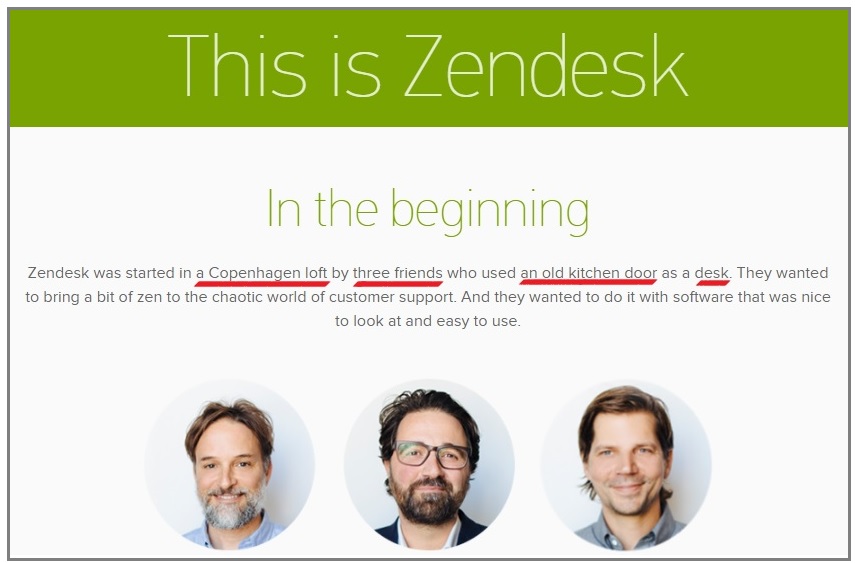
Bottom line: get your audience to picture what you’re telling them.
Great resources on body language techniques:
49. Avoid the lecture (here’s why)
“For the first 5-10 minutes of a typical 50 minute lecture a student remembers a high proportion of the information presented, after which the proportion of information preserved rapidly declines. Students typically retain 70% from the first 10 minutes of lecture, and 20% from the last 10 minutes . Source.
Yup… our brains don’t pay attention during a lecture.
 “Research has shown that the lecture, aka “a dump of information”, is quite literally the worst way to receive content. We cannot retain, interact, or engage with it. The research of James Hartley and Ivor Davies revealed that in the first seven minutes of a lecture, all were engaged. Shortly after that window of time, attention dropped and plateaued for the next forty minutes.
“Research has shown that the lecture, aka “a dump of information”, is quite literally the worst way to receive content. We cannot retain, interact, or engage with it. The research of James Hartley and Ivor Davies revealed that in the first seven minutes of a lecture, all were engaged. Shortly after that window of time, attention dropped and plateaued for the next forty minutes.
Don’t make the mistake of doing a brain dump. Ponder how to create small moments between 7-10 minute chunks of content that allow the audience to stop, pause, and think for a while. Avoid the lecture!”
Bryan Kelly (via Bryan Paul Kelly)
50. Rehearse
When asked what he thinks the most costly presentation mistake is, Scott Schwertly of Ethos3 had this to say…
 “Rehearse. Embrace the mindset that every presentation requires a number of rehearsals. If your boss wants you to present on a piece of subject matter you have never seen before, it requires a minimum of 7-8 rehearsals. Back in 1981, Jerry Seinfeld practiced 200 times for his comedy bit on The Tonight Show with Johnny Carson.
“Rehearse. Embrace the mindset that every presentation requires a number of rehearsals. If your boss wants you to present on a piece of subject matter you have never seen before, it requires a minimum of 7-8 rehearsals. Back in 1981, Jerry Seinfeld practiced 200 times for his comedy bit on The Tonight Show with Johnny Carson.
If you think practicing your presentation 2x the night before and 1x the morning of your talk will make you succeed, you are dead wrong.”
Scott Schwertly, CEO of Ethos3
Here are two effective ways to rehearse your speech:
-
Audio record yourself: it will help you assess which phrases sound good and which just look weird. Don’t forget to listen for filler words and heck out the time.
-
Get feedback. grab a friend or a colleague and ask him: What can I improve? What’s your favorite element of the speech?

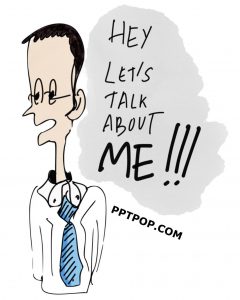


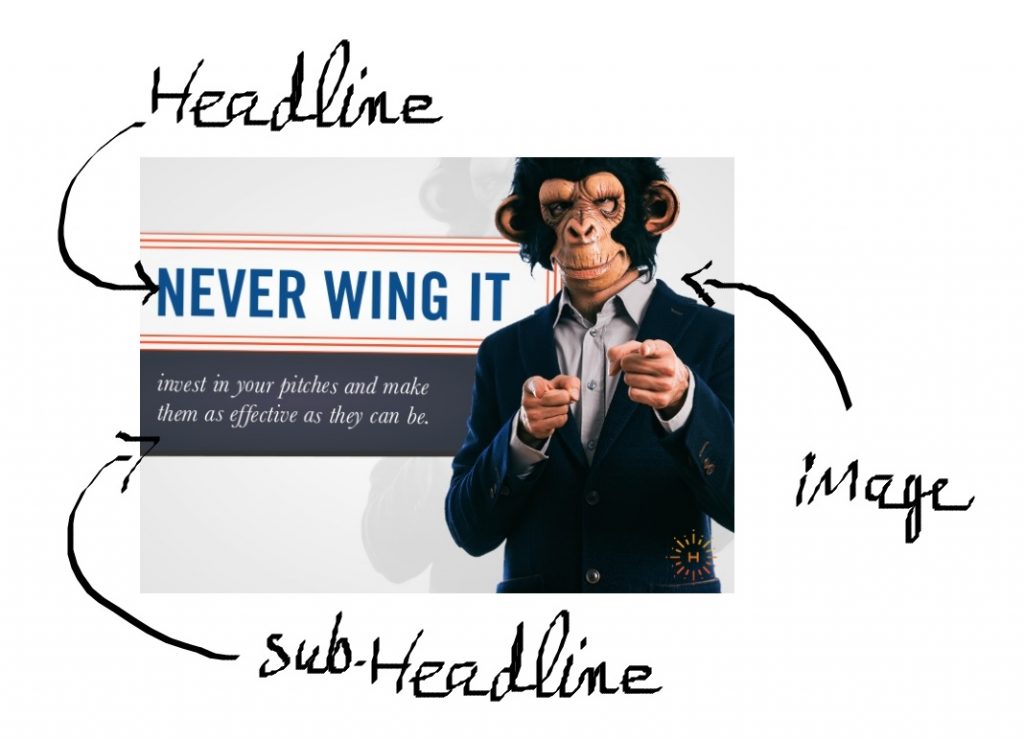


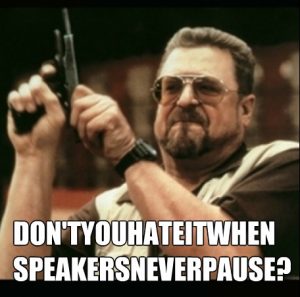
 It’s no secret that effective presentation skills can skyrocket your success – a new job, a boost for your business, or even fund raising for your startup.
It’s no secret that effective presentation skills can skyrocket your success – a new job, a boost for your business, or even fund raising for your startup.